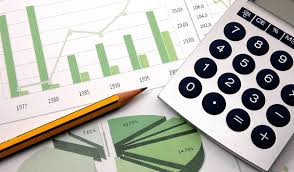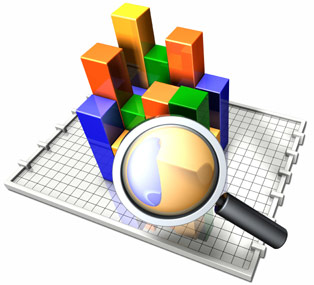Management > Managerial Statistics > Characteristics, Functions and Limitations of Statistics
Characteristics of Statistics:

Statistics are aggregate of facts:
A single figure cannot be analyzed. A single figure relating to height, production, sales, birth, death etc. cannot be called statistics, but aggregates of such figures like height of students in a class, production of different models of cars in the last fiscal year, can be considered as statistics because of their comparability, variation, and relationship.
Statistics are affected by a great extent by a multiplicity of causes:
A number of causes affect statistics in a particular field of inquiry, e.g., in yield of crops statistics are affected by climate, soil, fertility, availability of raw materials, rainfall, the quality of seeds used, quality and quantity of fertilizers used and methods of transport.
Statistics are numerically expressed:
Statistical study is concerned essentially with facts expressed in numerical form with their quantitative details but not qualitative descriptions. Therefore, facts indicated by terms such as ‘good’, ‘poor’ are not statistics unless a numerical value is assigned to each expression. For example, we can state “Demand increases, price increases”. Statistics do not trust such a statement without proper numerical data to prove it.
Statistics are enumerated or estimated with the required degree of accuracy:
Absolute accuracy is neither necessary nor sometimes possible in social sciences. But whatever standard of accuracy is once adopted, should be used throughout the process of collection or estimation. In statistics, the data is collected from the field or estimated with a proper degree of accuracy.
The degree of accuracy depends on the purpose of the study. The average height of students in a class is measured in centimeter where accuracy is not that important, but the length of screw used in an automobile is measured in millimeter because accuracy is important in this case.
Statistics should be collected in a systematic manner for a predetermined purpose:
The required fact should be collected with planning and with suitable scientific methods. If it is not done scientifically and properly it may give wrong or misleading inferences. If there is no predetermined purpose, all the efforts in collecting the figures and collection of indiscriminate data may be a waste of time and resources.
Statistics should be capable of being placed in relation to each other:
The collected figure should be comparable and well-connected so that analyzation of the collected data is possible. Thus in statistics, similar related quantities should be compared.
Functions of Statistics:
To present facts in a definite form:
- Without a statistical study our ideas are likely to be vague, indefinite and hazy, but figures help as to represent things in their true perspective. Using statistics we can collect and organize data. Using organize data its analysis is carried out to verify the fact.
To simplify unwieldy and complex (mass) data:
Statistical study and methods reduce the complexity of data by choosing the proper sample. Studying the sample and applying a statistical method to this sample, the huge and complex mass data can be understood. The complex data may be simplified by presenting them pictorially in the form of tables, graphs or diagrams, or representing it through averages and variations.
To use it for comparisons:
The purpose of data collection can be fulfilled only when they are compared with others of the same type. To do these certain statistical methods, such as average, coefficients, rates, ratios, grand totals, variations, a measure of dispersion etc. are used.
To bring out trends and tendencies in data:
The data is collected and organized, then using techniques like moving averages, time series, interpolation and extrapolation the trend can be studied which is useful for forecasting.
To provide guidance in the formulation of policies and take a decision:
Government and businesses use statistical study to take a decision by analyzing the data. Managers can use statistical techniques to arrive at a decision and can support it with necessary statistical data.
To enlarge individual experience:
The knowledge collecting ability of the human being is limited to its senses. The knowledge can be extended in various ways by studying certain conclusions and results, using certain statistical techniques. Statistics bring hidden relation between variables.
To enable measurement of the magnitude of a phenomenon:
Using statistical techniques we can estimate the population of the country, the rate at which it is growing, the quality of life, their standard of living, their consumption pattern, their disposable incomes. We can also estimate the production of food grains.
Limitations of Statistics:
The use of statistics is limited to numerical studies:
- Statistical methods cannot be applied to study the nature of all type of phenomena. It deals with only such phenomena that can be measured quantitatively and to whom a numerical value can be assigned. For, example, the health, poverty, and intelligence, beauty of a group of individuals, cannot be quantitatively measured, and hence cannot be part of a statistical study. Thus statistics does not deal with qualitative data.
Statistics does not deal with individual facts:
- Statistical methods deal with population or aggregate of individuals rather than with individuals. Analysis of individual fact without comparison is highly difficult.
Statistical relies on estimates and approximations:
- Statistical laws are not exact laws like mathematical or chemical laws. Statistical laws are true only on averages. They are derived by taking a majority of cases and are not true for every individual. Thus they are probabilistic and hence the statistical inferences are uncertain.
Statistical results might lead to fallacious or wrong conclusions:
- By deliberate manipulation of figures and unscientific handling or due to prejudice on part of data collectors (enumerators. Lack of scientific methods and statistical methods can create such incorrect data. Such manipulated or incorrect data placed in the hands of an expert may lead to fallacious results. The figures may be stated without their context or may be applied to a fact other than the one to which they really relate.
Statistical Softwares:
If collected data is small the data can be classified, organized easily and inference can be obtained in a short period. But if data collected is large then we have to take examples of software.
Softwares used in statistics are Minitab, SPSS (Statistical Package for Social sciences and E-views.
Previous Topic: Introduction to Statistics
Next Topic: Steps in Statistical Survey
